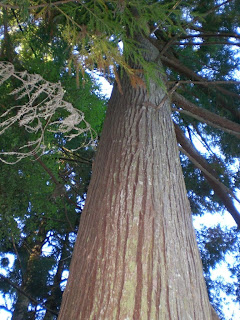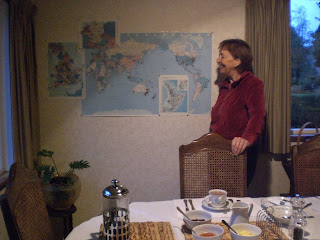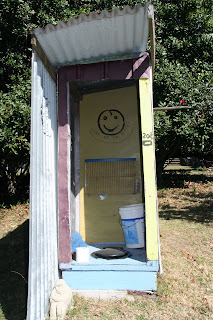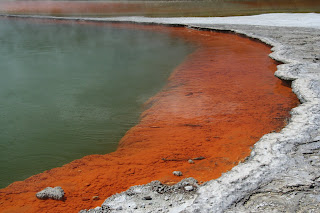The Coromandel is a beautiful peninsula, enfuriatingly close to Auckland and consequently overcrowded to the point of insanity in the summer holidays. As a result, my attitude towards the area is often one of slight resentment (what have they got that we haven't got?) and annoyance (I'd like to go there for a drive, but I'd better wait until after the peak season).
However, Chris and I recently booked a bed and breakfast in Thames and were pleasantly surprised.
The purpose of our journey was to visit the German consulate in Auckland and we figured that Thames was close enough to Auckland to break up the drive, and far enough a way to shift the price/quality balance in our favor. People say that Thames is a great place to go, but I never really understood why until now. We found ourselves staying at
Huia lodge, about 9km inland from the Thames coast. Last time, we stayed in a beautiful
motel on the Thames coast, but to be honest, the beach didn't impress us much. Huia Lodge, on the other hand, was deep into the bush, and staying there made a lot of sense. I was surprised to find that most of Celia and Murrays guests were from the U.K., with Germans being their next biggest group of visitors. Apparently their cottage is very close to
the Pinnacles, a mountain range I hadn't even heard of until that moment, and yet it is a major attraction to trampers all around the world!
We had arrived shortly before dark, but we had a little bit of time to zoom down to the Department of Conservations visitor's center for a look. We took a short walk to a model dam, a replica of the kinds of dams early woodcutters built for floating logs out of the bush. Everything was just so beautiful, and even though I would usually put my nose in the air and say that the Ureweras (near Whakatane) are just as good, at that moment I had my doubts.
So, I have to say, at this moment, credit where credit is due, the Coromandel is definitely worth taking a look. If you want to go there, I would strongly recommend hiring a car, and if you like to camp, take a tent. Coromandel has a lot of problems and prohibitions on freedom camping, and for the price of hiring a campervan and then paying for a campsite, you may as well stay in a nice B&B like Huia Lodge.
Here are some photos from our trip:
coffee in Katikati, the cafe is called "Robert Harris", a popular franchise here.
Riding the old steam train in Waihi
Walking over the old bridge in the Waihi Gorge.
These are the Pinnacles.
The visitor centre is beautiful, and gets a lot of sponsorship from the mining company.
The kahikatea track is a shorter exhibition track. The track to the mountains isn't this good!
We took the photos in the evening and the light was really beautiful, but I guess the camera had other ideas. This is the model dam, built to give visitors an idea of the technology used by early woodcutters.
It was approaching night and we got a little bit nervous about getting lost in the bush. Having found our way back to the car, our anxiety was further increased by the slightly confusing system of roads for getting out of the park. These teeth are built to stop people entering through the exit, but we weren't entirely confident that we hadn't come out the wrong way and had to check that the teeth weren't meant for us!
Having ascertained that we weren't trapped in the national park for the night, playing with this new technology was kind of fun!
Back to Huia Lodge for a cup of tea.
Here is Celia with Huia Lodge's record of where each visitor comes from.
Here is the Autobahn cafe, a popular place to stop on the way out of Auckland.
Autobahn Cafe, Bombay, South of Auckland.
Good food!





















































